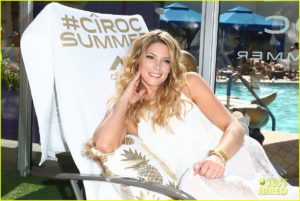If you’re like most companies in today’s competitive environment, you spend a lot of money on marketing efforts. And if you’re like most companies, you likely have very little perspective on whether those marketing efforts are worth the spend. So much happens on a consumer’s journey from the initial point of brand awareness on their way to the (brick-and-mortar or virtual) store, marketing can seem like a black box, and it can be difficult to know where to invest resources to provide the most value.
If you’re a regular reader of our blog, you may be familiar with our take on experiential marketing from previous articles (Marketing in the experience economy: 5 ways to ensure your brand is experiential and Don’t shortchange the in-store experience). Experiential marketing is a strategy that directly engages and encourages consumers to interact with your brand. What we haven’t discussed in depth is the power that lies in combining experiential marketing with digital marketing. When combined, these two powerful strategies increase brand awareness, customer retention, and sales by creating a memorable experience with measurable results.
A special report by the Event Marketing Institute makes the case for engaging in a joint experiential/digital marketing strategy:
- 65% of brands that do experiential marketing say it correlates positively with their sales.
- 74% of event attendees say that they have a more positive opinion about the company, brand, product, or service being promoted after the event.
- 98% of consumers say they are more inclined to purchase the brand after an experience.
- Nearly half of all consumers post something about their experience on social media.
Those statistics make it hard to believe only 35% of brands say they consistently capture or create content related to their experiential marketing event. It is crucial to understand almost all consumers at experiential marketing events capture and share content, and brands who don’t utilize this content are missing out on major brand-building opportunities – and sales.
5 Examples of Experiential Marketing We Love
1. Amazon’s Treasure Truck

Amazon’s Treasure Truck includes interactive activities like “hamburger” Frisbee
2. Ralph Lauren’s Be Part of the Art

Consumers could win a chance to be transformed into living portraits by submitting their story online.
This campaign designed by the Ralph Lauren Denim Supply Company incorporated different artistic points-of-view including live art, music, and design. Fans were selected through the Ralph Lauren website to attend the “Project Warehouse Campaign”. Famous artist Alexa Meade performed the live art portion of the program, where fans could be part of 2D portraits that emulated the Denim Supply campaign ads. The live music section was performed by DJ/Producer AVICII, with the lounge area set up for fans to enjoy cocktails while listening to music. Lastly, the live design station was performed by Ralph Lauren’s own Arran Gregory, where he personalized denim designs for guests. Fans were encouraged to take photos and videos to share on social media, and the brand promoted the event by streaming the day’s activities through social media outlets.
3. CIROC’s Pool Party in the Desert

Ashley Greene from Twilight attends CIROC’s Coachella after party
4. Universal Studios’ Halloween Extravaganza

Guests participate in Universal Studio’s in-park horror adventure.
Guests used digital kiosks before entering the park to plan their “horror path”, making them part of the narrative. Guests also decided if they would live or die at the end of the adventure, capping off the ultimate horror movie experience.
5. General Electric’s Super Bowl Experience

Guests participate in Universal Studio’s in-park horror adventure.
The second tent allowed fans to test new thermal imaging cameras, where families could take pictures and immediately have them printed free of charge. GE left fans with a picture to remember the event and a lasting impressing of their brand. GE also encouraged fans to post their thermal images on social media accounts with the tag #FuelTheFuture.
Experiential marketing creates significant, multifaceted opportunities for content generation. The Event Marketing Institute study also highlights research and other consumer data that suggest other opportunities for marketers, including:
- Content shares via social media significantly amplify the reach of events and experiences by reaching a higher concentration of potential consumers.
- Quality real-time content and sharing experiences drive consumer engagement at events.
- Experiential content such as photos and video is often repurposed by brands for other marketing campaigns and media placements.
- Content sharing metrics are highly measurable and provide considerable customer insights.
- When consumers look back on their branded event content, they often view the brand positively.
- Most importantly, consumers say quality event content experiences improve their brand perception and influence purchases.
Each brand previously discussed strategically used digital assets to gather consumer information and grow their database of potential clients. This database could later be used to target potential consumers, nurture existing relationships, delight loyal customers, and encourage first-time buyers to purchase.
Patrick Muskivitch is an executive marketing strategist and an expert in experiential marketing. Brenda Merino is a digital marketing specialist helping manage our client’s experiential and digital marketing from strategy to execution. If you would like information on how to achieve success with experiential and digital marketing, click here to contact Patrick or Brenda.
